“Faith and reason are like two wings on which the human spirit rises to the contemplation of truth.” Those opening words of Pope Saint John Paul II’s encyclical Fides et ratio have come to encapsulate the Catholic teaching that one need not — indeed, cannot — choose between supernatural faith and natural reason. Far from being inimical to each other, the late pontiff argues, faith and reason are mutually reinforcing and complementary modes of grasping truth; they stand or fall together.
This view, which was given its most systematic articulation by Saint Thomas Aquinas in the thirteenth century, is not especially fashionable today. Many modern believers fear the encroachment of science — the paragon of natural reason — onto the territory of religion. And many modern secularists — including many scientists — take it as given that the advancement of science entails the retreat of religious belief. Implicit here is a triumphalist account of scientific reason as breaking with and superseding pre-scientific and irrational beliefs. If God exists at all, this story goes, it is within the ever-narrowing gaps between that which modern science has yet to explain. Those who reject modern science on the basis of religious belief merely turn the story on its head.
Bucking this trend, Stephen M. Barr — a Catholic physicist at the University of Delaware and popular commentator on the relationship between science and religion — has founded the Society for Catholic Scientists (SCS), a professional organization intended to “foster fellowship” among Catholic scientists. (Full disclosure: The author, although not a scientist, is a “scholar associate” of SCS.) The society, whose inaugural meeting took place in Chicago in late April 2017, stands as a modern riposte to the claim that faith and reason are incompatible.
That view has never squared well with the history of science — populated as it is with religious believers such as Galileo, Newton, Faraday, and Maxwell. This point was hammered home in two lectures at the conference. Robert Scherrer, professor and chair of the Department of Physics and Astronomy at Vanderbilt University, discussed the life and work of the Belgian astronomer and priest Georges Lemaître. A friend and colleague of Albert Einstein, Lemaître was the first to propose what’s now known as the Big Bang theory. In so doing, he laid the groundwork for modern cosmology — which, according to Scherrer, had been until that point a fairly marginal subfield of astronomy.
J. Christopher Clemens — an astronomer and faculty member of the Program in Medieval and Early Modern Studies at the University of North Carolina — gave a talk on the early twentieth-century French Catholic Pierre Duhem, who was a physicist as well as a philosopher and historian of science. Drawing on Duhem’s historical writings, Clemens pointed out that the apparent conflict between faith and science — and the attendant tensions within education — “is not new.” On the contrary, an analogous debate took place in the Middle Ages, but “the science” of the time “was Aristotle’s and the faith was the theologians’ of the thirteenth century.”
Clemens focused on the Condemnation of 1277, in which the Bishop of Paris proscribed the teaching of 219 theological “errors,” threatening those who promulgated them with excommunication. Among these “errors” was the proposition that “the first cause cannot make many worlds” — a principle of Aristotelian physics. According to Duhem, the effect of the Condemnation was to spur the development of modern scientific ideas by weakening the Aristotelian framework and encouraging scientists and theologians to consider seriously the possibility that God, who is omnipotent, could create “many worlds.” This, in turn, suggested that the earth could be one of many such “worlds,” laying the groundwork for modern astronomy and, arguably, even the contemporary notion of the multiverse.
Today, historians disagree about the impact the Condemnation had on the development of theology and science, and philosophers still debate the relationship between Aristotelian physics and modern science. But whether or not Duhem’s historical thesis holds up, Clemens’s goal was to emphasize the dynamic interplay between science and religion revealed by Duhem’s writing — an interplay that extends back before what we typically consider the beginning of modern science.
In addition to these historical figures, a preponderance of living counterexamples to the view that science and religion are incompatible could be found at the SCS conference. John Barrow, a prominent cosmologist at the University of Cambridge and popular science writer, gave the opening lecture, in which he explained the modern account of the origin of the universe. Afterwards, Harvard astronomer Karin I. Öberg, whose work focuses on the impact of chemistry on planet formation, discussed her research on planets that orbit stars outside our solar system. According to Öberg, the recent discovery that such “exoplanets” are very common — and that many may be habitable — undermines the popular idea that the universe described by modern science is impersonal and hostile to life.
Why We Study “Useless” Subjects
The conference’s keynote address was given by Kenneth R. Miller, a noted biologist at Brown University, who received the SCS’s first Saint Albert award (named for the doctor of the Church who was also teacher of Thomas Aquinas). Miller is the author of a widely used biology textbook, which played a key, if controversial, role in the high-profile Kitzmiller v. Dover case about teaching evolution and intelligent design in public schools. Miller, who was a lead witness in the case, has become a prominent defender of both the biological theory of evolution through natural selection and the compatibility of science and religion. In his lecture, he discussed his experiences in the trenches of the public war between science and religion and offered some lessons for approaching the subject today.
The conference’s banquet address was given by Brother Guy Consolmagno, a planetary scientist and Jesuit. Consolmagno, who wavered early in his career between a life of service to the poor and needy and a scholarly life devoted to science, asked “Why do we look up at the heavens?” Morever, why do we — and how can we — study something as “useless” as astronomy or planetary science when people are starving all over the world?
Consolmagno told the story of how he left academia as a young man to join the Peace Corps in the hope of helping the poor in Africa, spurred by a “guilty conscience” brought on by a Jesuit education. He wound up teaching science to high school students and, ultimately, teaching astronomy in the graduate department at the University of Nairobi. The lesson he drew from this experience was that scientific education — whatever its potential economic and technological benefits — is not the exclusive property of the elite but a universal gift. So why we do we study science when people are starving? Because the quest for truth speaks to and is an expression of one of the deepest longings of the human spirit, one that is common to all peoples. Consolmagno returned to the United States and to academia, joined the Jesuits, and is now director of the Vatican Observatory.
Skepticism and Trust
As fate would have it, the SCS conference occurred on the same weekend as the much-publicized national March for Science. Unsurprisingly, discussions during the Q&A sessions frequently turned to the public perception of science, the erosion of scientific authority, and growing religious skepticism about science. The question that came up again and again was what scientists — in particular, Catholic scientists who embrace both faith and reason — can do about it.
Broadly speaking, the speakers offered three different answers. Kenneth Miller argued, in effect, that scientists must be better educators. By doing a better job of familiarizing the public with scientific reasoning and its conclusions, we might stave off the rejection such of well-founded theories as evolution.
Brother Consolmagno urged his fellow Catholic scientists to live the harmony between faith and reason — to be both good scientists and good Christians.
Perhaps the most profound answer came from Joachim Ostermann, a Franciscan priest who was, before entering religious life, a biochemist researching mitochondrial biogenesis. Fr. Ostermann discussed the implications of the scientific worldview for the Christian understanding of the human person. During the lively discussion that ensued, Ostermann — who defended a qualified form of philosophical idealism, which did not sit well with some of his fellow scientists — pointed out that the current scientific crisis stems from distrust of authority. It is not that the public is uneducated about science so much as distrustful of the scientific community — and this is, at least in part, the fault of scientists themselves. To solve the problem, trust must be reestablished between the scientific community and the lay public. But trust once lost is much harder to regain. To start, Ostermann suggested, scientists should be more honest about their work — especially about the tentative and limited nature of many scientific conclusions, some of which bear directly on the lives of ordinary citizens. This is especially important, Ostermann urged, outside “physics, chemistry, and a few areas of biology,” where scientific findings are at times little better than well-informed guesswork.
Whether or not one accepts all of Fr. Ostermann’s conclusions, his call to humility is welcome in the current climate of our public debates. And it is directly related to the mission of SCS. For, indeed, as Saint Thomas emphasized, a virtue of supernatural faith is to highlight the limits of natural reason — not by demeaning reason or limiting its potential, but, rather, by placing it within the wider context of our place within creation and, ultimately, our relationship to its creator. Or, as John Paul II puts it toward the end of Fides et ratio:
“The search for truth, even when it concerns a finite reality of the world or of man, is never-ending, but always points beyond to something higher than the immediate object of study, to the questions which give access to Mystery.”
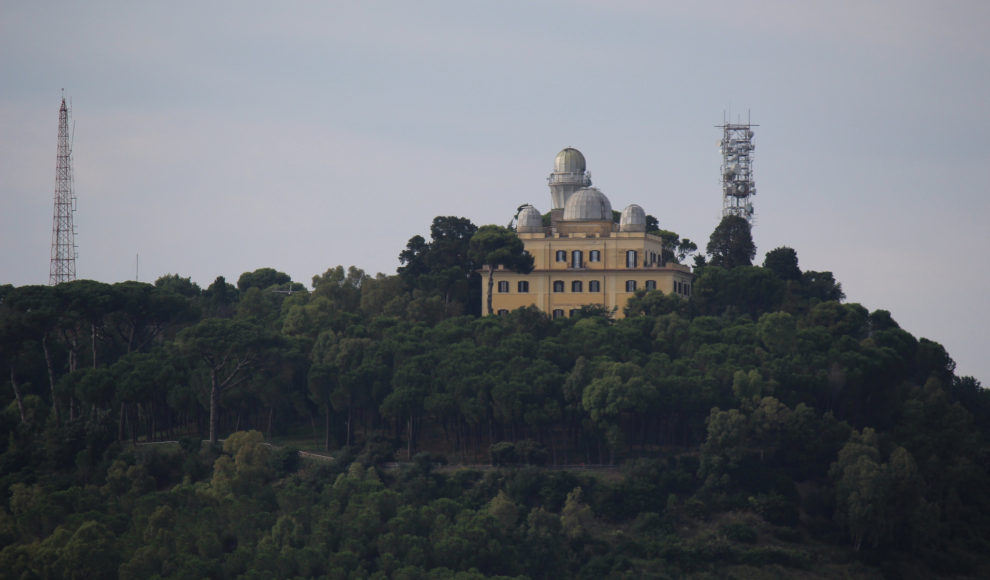


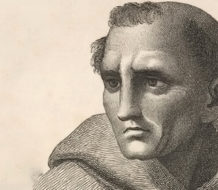


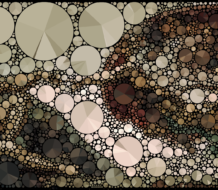

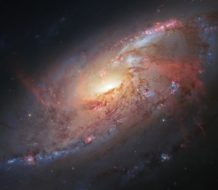
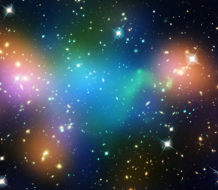
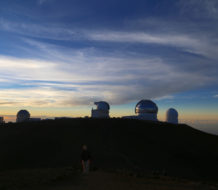

“According to Öberg, the recent discovery that such “exoplanets” are very common — and that many may be habitable — undermines the popular idea that the universe described by modern science is impersonal and hostile to life.” How does the existence of probable life on other planets make it personal? Also, the volume of the universe that allows for known life is just a fraction above zero. Even on the earth, the known livable portion is just a couple of miles above and below the surface.
Also, the RCC agrees with evolution but insists that there was an “Adam” and “Eve” that all humans came from. Two individuals, the first en-souled and the cause of sin. Jesus makes no sense without these two. How do Catholic scientists reconcile this divergence?
Thanks for the thoughtful comments about our conference!
“Given the proven reliability of methodological naturalism in yielding knowledge of the natural world and the unavailability of any method at all for knowing the supernatural, supernaturalism is little more than a logical possibility.” (http://www.counterbalance.org/stdweb/about-frame.html) It’s simple, really. Anyone can fantasize anything, but to no avail absent demonstrability.
“Many modern believers fear the encroachment of science — the paragon of natural reason — onto the territory of religion. And many modern secularists — including many scientists — take it as given that the advancement of science entails the retreat of religious belief. Implicit here is a triumphalist account of scientific reason as breaking with and superseding pre-scientific and irrational beliefs. If God exists at all, this story goes, it is within the ever-narrowing gaps between that which modern science has yet to explain. Those who reject modern science on the basis of religious belief merely turn the story on its head.”
— M. Anthony Mills
“88. Another threat to be reckoned with is scientism. This is the philosophical notion which refuses to admit the validity of forms of knowledge other than those of the positive sciences; and it relegates religious, theological, ethical and aesthetic knowledge to the realm of mere fantasy. …
— Pope Saint John Paul II, Fides et Ratio
It is science perverted by atheism that becomes the realm of mere fantasy.
What is the difference between modern science perverted by atheism and modern science rejected “on the basis of religious belief”? The difference is that Christians are not threatened by scientific discoveries the implications of which seem to undermine theism. They know that nature and their religion have the same author, so ultimately there can be no real conflict between the two, no matter what it might look like temporarily. What they reject is science perverted by atheism.
On the other hand, atheists panic, sue school boards and punish scientists who present evidence which seems to undermine atheism. See Ben Stein’s documentary “Expelled: No Intelligence Allowed” for details of how contemporary, dogmatically atheistic science punishes “infidels.”
There is much that “modern science has yet to explain.” I am not convinced that those gaps in our knowledge are “ever-narrowing.” It seems to me that the more we learn the more we realize how much we don’t know. Scientific discoveries often create huge new mysteries. It is just as irrational to assume, with a “naturalism of the gaps” attitude, that eventually a natural explanation for all such mysteries will be found, as it is with a “God of the gaps” approach to always react to a mystery with, “That must be the part God does.”
We have no good reason to believe that natural realities are the only realities. We have good reasons to believe they are not the only realities. True science remains relentlessly objective, not letting an a priori commitment to the belief that there are only material or natural realities reduce it to irrationality. True science must first look for natural explanations and must remain determined to look for them, yet always remain open to the possibility that there just isn’t one, and be ready to admit it when it looks like that is the case.
For example, there is now very well corroborated evidence that the natural Universe had a beginning. We also know that anything that begins to exist had a cause for its existence, and that from nothing, nothing comes. So, if all that is natural — time, space, matter and energy — had a beginning, then nature’s cause couldn’t have been a natural cause. And the natural Universe couldn’t have popped into existence, uncaused, out of nothingness. These facts inexorably lead one to the conclusion that a *super*natural reality brought the Universe into being.
Another example is that we now know that the physical dimension of life consists of digital information-based nanotechnology the functional complexity of which is light years beyond our own. Massive quantities of assembly instructions for intricate cellular protein machines used for cellular metabolism and reproduction reside in the coding regions of DNA, as do the assembly instructions for the cellular machinery that utilizes those instructions to build the rest of the cellular machinery. How does such a system get started? Karl Popper’s thoughts on this dilemma:
“What makes the origin of life and of the genetic code a disturbing riddle is this: the genetic code is without any biological function unless it is translated; that is, unless it leads to the synthesis of the proteins whose structure is laid down by the code. But … the machinery by which the cell (at least the non-primitive cell, which is the only one we know) translates the code consists of at least fifty macromolecular components which are themselves coded in the DNA. Thus the code cannot be translated except by using certain products of its translation. This constitutes a baffling circle; a really vicious circle, it seems, for any attempt to form a model or theory of the genesis of the genetic code. Thus we may be faced with the possibility that the origin of life (like the origin of physics) becomes an impenetrable barrier to science, and a residue to all attempts to reduce biology to chemistry and physics.”
This situation is only “an impenetrable barrier” to *atheistic* science. True, relentlessly objective science acknowledges that intelligence is a known reality, and that it is therefore entirely legitimate for science to consider it among the possible causal factors in a given phenomenon coming into being. Since we know of no instances of digital information-based, significantly functionally complex systems coming about mindlessly and accidentally, nor how that would ever happen, rationality demands that we admit that intelligent agency is very likely to have been a causal factor in the emergence of the most functionally complex system known to us. The fact that the system is derived from massive quantities of extremely precise, digitally stored information provides a clue as well. ;o)
Considering cellular life — a system that makes an automated factory filled with computer-driven robotic equipment look like crude technology — one must remember that technology is defined as the application of scientific knowledge for a purpose. There is currently no plausible explanation for the mindless and accidental emergence of life on Earth. True science admits that.
A final thought: God is not a “God of the gaps.” He is the God of the whole thing. He holds the Universe in existence instant by instant. Where He is consistent in doing this we call that “the laws physics.” Where He is deliberately inconsistent — to make sure we know it is Him Who is communicating with us — we call that “miracles.”